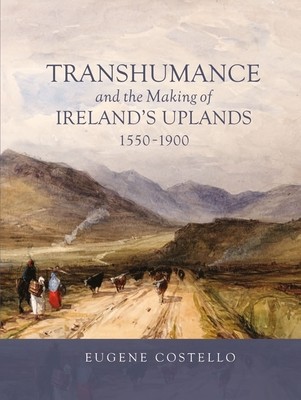
- We will send in 10–14 business days.
- Author: Eugene Costello
- Publisher: Boydell Press
- ISBN-10: 1837651477
- ISBN-13: 9781837651474
- Format: 17 x 24 x 1.3 cm, minkšti viršeliai
- Language: English
- SAVE -10% with code: EXTRA
Transhumance and the Making of Ireland's Uplands, 1550-1900 (e-book) (used book) | bookbook.eu
Reviews
Description
First full survey of how transhumance operated in Ireland from the sixteenth century to the beginning of the twentieth.
WINNER: American Conference for Irish Studies Donald Murphy Prize for Distinguished First BookSPECIAL COMMENDATION: Publication Prize in Irish History, NUI Awards 2021
SHORTLISTED: European Association of Archaeologists Book Prize 2023 The rearing of cattle is today a fairly sedentary practice in Ireland, Britain and most of north-west Europe. But in the not-so-distant past it was common for many rural households to take their livestock to hill and mountain pastures for the summer. Moreover, ethnographic accounts suggest that a significant number of people would stay in seasonal upland settlements to milk the cows and produce butter and cheese. However, these movements all but died out in the nineteenth and twentieth centuries, meaning that today transhumance is mainly associated with Alpine and Mediterranean landscapes. This book is the first major interdisciplinary approach to the diversity and decline of transhumance in a northern European context. Focusing on Ireland from c.1550 to 1900, it shows that uplands were valuable resources which allowed tenant households to maintain larger herds of livestock and adapt to global economic trends. And it places the practice in a social context, demonstrating that transhumance required highly organized systems of common grazing, and that the care of dairy cows amounted to a rite of passage for young women in many rural communities.
EXTRA 10 % discount with code: EXTRA
The promotion ends in 21d.10:18:36
The discount code is valid when purchasing from 10 €. Discounts do not stack.
- Author: Eugene Costello
- Publisher: Boydell Press
- ISBN-10: 1837651477
- ISBN-13: 9781837651474
- Format: 17 x 24 x 1.3 cm, minkšti viršeliai
- Language: English English
First full survey of how transhumance operated in Ireland from the sixteenth century to the beginning of the twentieth.
WINNER: American Conference for Irish Studies Donald Murphy Prize for Distinguished First BookSPECIAL COMMENDATION: Publication Prize in Irish History, NUI Awards 2021
SHORTLISTED: European Association of Archaeologists Book Prize 2023 The rearing of cattle is today a fairly sedentary practice in Ireland, Britain and most of north-west Europe. But in the not-so-distant past it was common for many rural households to take their livestock to hill and mountain pastures for the summer. Moreover, ethnographic accounts suggest that a significant number of people would stay in seasonal upland settlements to milk the cows and produce butter and cheese. However, these movements all but died out in the nineteenth and twentieth centuries, meaning that today transhumance is mainly associated with Alpine and Mediterranean landscapes. This book is the first major interdisciplinary approach to the diversity and decline of transhumance in a northern European context. Focusing on Ireland from c.1550 to 1900, it shows that uplands were valuable resources which allowed tenant households to maintain larger herds of livestock and adapt to global economic trends. And it places the practice in a social context, demonstrating that transhumance required highly organized systems of common grazing, and that the care of dairy cows amounted to a rite of passage for young women in many rural communities.


Reviews